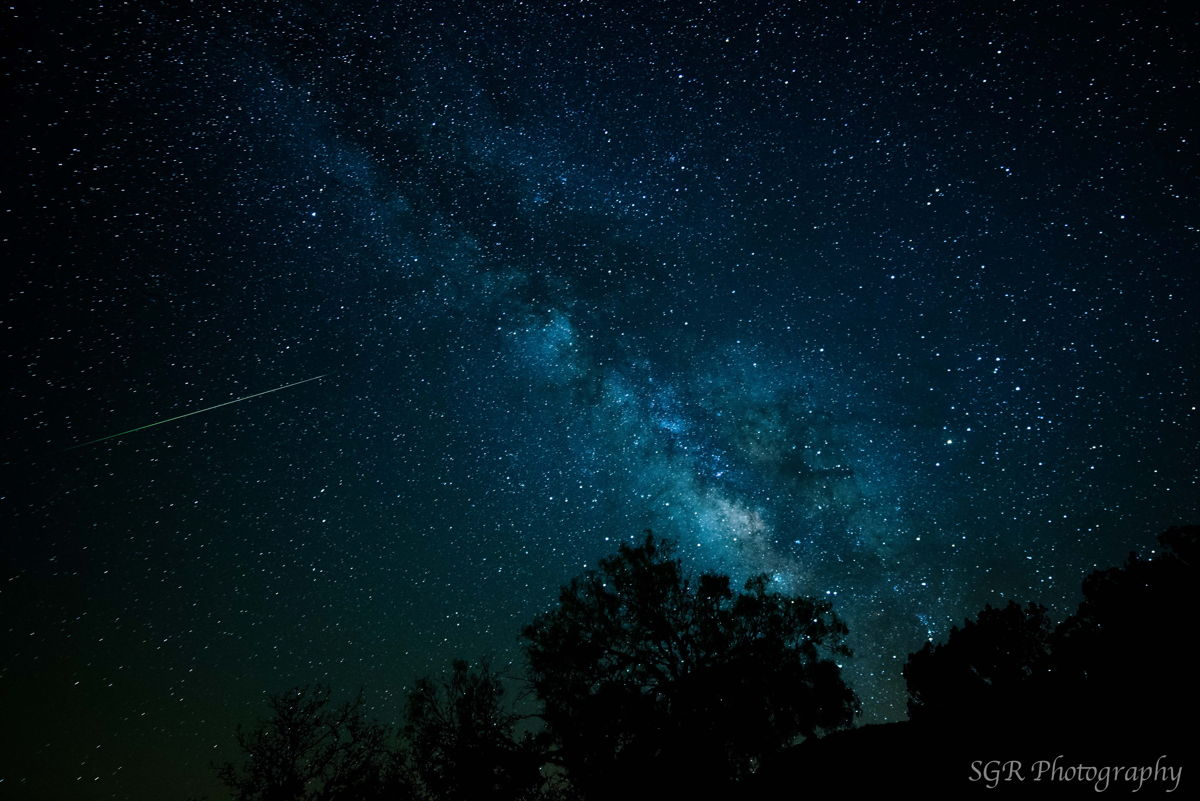
Southern Hemisphere skywatchers, look up in the early hours of May 5 to spot the legacy of Halley's Comet: the Eta Aquarid meteor shower at its peak. (Northern Hemisphere viewers may catch a few special shooting stars, too.)
Do you plan to be around when Halley's Comet makes its next visit through the inner solar system? According to the best calculations, this famous comet will make its next swing around the sun during the final days of July 2061. During August of that year, the comet is expected to shine as bright as a zero- or first-magnitude star, with a long tail pointing straight up from the west-northwest horizon in the late evening twilight sky.
I personally would love to see it again; I caught it at its most recent appearance, in 1986. I was 30 years old back then, but to see it again, I must hope to live to the ripe old age of 105. While the odds are long that I'll be around to see this famous object a second time, there's a chance that in the coming days I'll catch sight of Halley's legacy: a few shooting stars in the early dawn sky.
Related: Eta Aquarid Meteor Shower 2019: When, Where and How to See It
The orbit of Halley's Comet very nearly intersects with Earth's at a point in our orbit during the first week of May. So, even when the comet is long gone, the dusty debris left in the wake of previous visits flows along the line of the comet's orbit like some cosmic scree. When Earth passes through this region of space, these tiny particles ram into our atmosphere at roughly 41 miles (66 kilometers) per second and are consumed in a heartbeat in a fiery streak of light — and the Eta Aquarid meteor shower is the result.
This year, the shower peak is expected on Sunday morning, May 5. The Eta Aquarids are usually the year's richest for Southern Hemisphere observers, bringing 30 to 60 meteors in the hour just before dawn if the sky is very dark and clear. Rates remain almost as good until about May 10. Fortunately, the moon is new on May 4 this year and so will cause no interference. Eta Aquarids are swift and often leave long-lasting trains.
At north-temperate latitudes, the Eta Aquarid radiant — the point in the sky the meteors appear to stream away from — never rises high in the nighttime sky, so rates are always much lower there. Observers in the southernmost U.S. typically report only 10 meteors per hour; practically none are seen north of latitude 40 degrees.
Get the Space.com Newsletter
Breaking space news, the latest updates on rocket launches, skywatching events and more!
You might catch an Earth-grazer
But if you live in Denver, Chicago, New York, Boston or other northern locations, don't give up hope. You still could see a very special type of meteor: an Earth-grazer.
These meteors skim along the top of Earth's atmosphere like stones skipping across the surface of a pond. They appear when the radiant of a meteor shower is just above the horizon, ejecting space debris not down, but horizontally overhead.
But be advised that Earth-grazers are rare. You might be outside for hours, and yet if you catch sight of just one, it will make your night's watching worthwhile. Start watching at around 3 a.m. in your local time zone. That's when the constellation Aquarius begins to emerge from beyond the east-southeast horizon. By 4:15 a.m., dawn will be breaking, so you'll have just over an hour to hope that an Earth-grazer will come your way. The brightest of the Eta Aquarids tend to leave long-lasting trains.
Looking for Earth-grazers is simple: Spread a blanket on the ground, lie down and look straight up. A reclining lawn chair facing southeast works just as well. Eta Aquarid Earth-grazers move on long paths and streak overhead, flying generally southeast to northwest. Since they are on the outbound leg of their orbits, these meteors arrive mainly in daylight; that is why their interval for nighttime observation is short and occurs just before dawn.
And even if you don't see any meteors, you'll at least get a preview of the stars and constellations that will be visible in the after-sunset hours on balmy midsummer evenings. It's also quite likely that you'll come across a few artificial satellites, mimicking "moving stars" as they track on general west-to-east courses across the sky. The hours just before sunrise are the best times to see these objects.
- Eta Aquarids: Meteor Shower From Halley's Comet
- A Gift from Halley's Comet: The Eta Aquarid Meteor Shower in Photos
- How Meteor Showers Work (Infographic)
Joe Rao serves as an instructor and guest lecturer at New York's Hayden Planetarium. He writes about astronomy for Natural History magazine, Farmers' Almanac and other publications, and he is also an on-camera meteorologist for Verizon FiOS1 News in New York's lower Hudson Valley. Follow us on Twitter @Spacedotcom and on Facebook.
Join our Space Forums to keep talking space on the latest missions, night sky and more! And if you have a news tip, correction or comment, let us know at: community@space.com.

Joe Rao is Space.com's skywatching columnist, as well as a veteran meteorologist and eclipse chaser who also serves as an instructor and guest lecturer at New York's Hayden Planetarium. He writes about astronomy for Natural History magazine, Sky & Telescope and other publications. Joe is an 8-time Emmy-nominated meteorologist who served the Putnam Valley region of New York for over 21 years. You can find him on Twitter and YouTube tracking lunar and solar eclipses, meteor showers and more. To find out Joe's latest project, visit him on Twitter.









